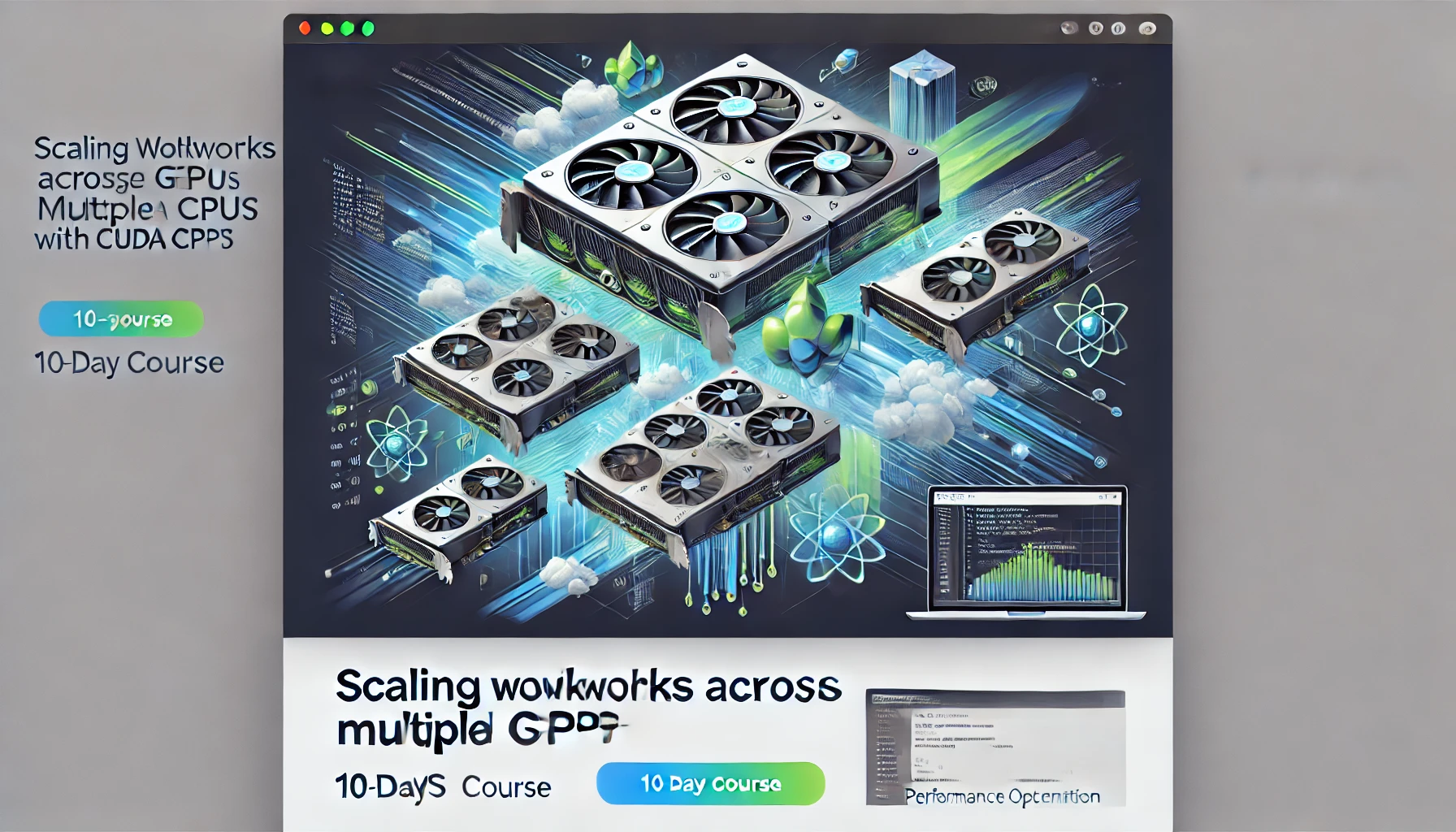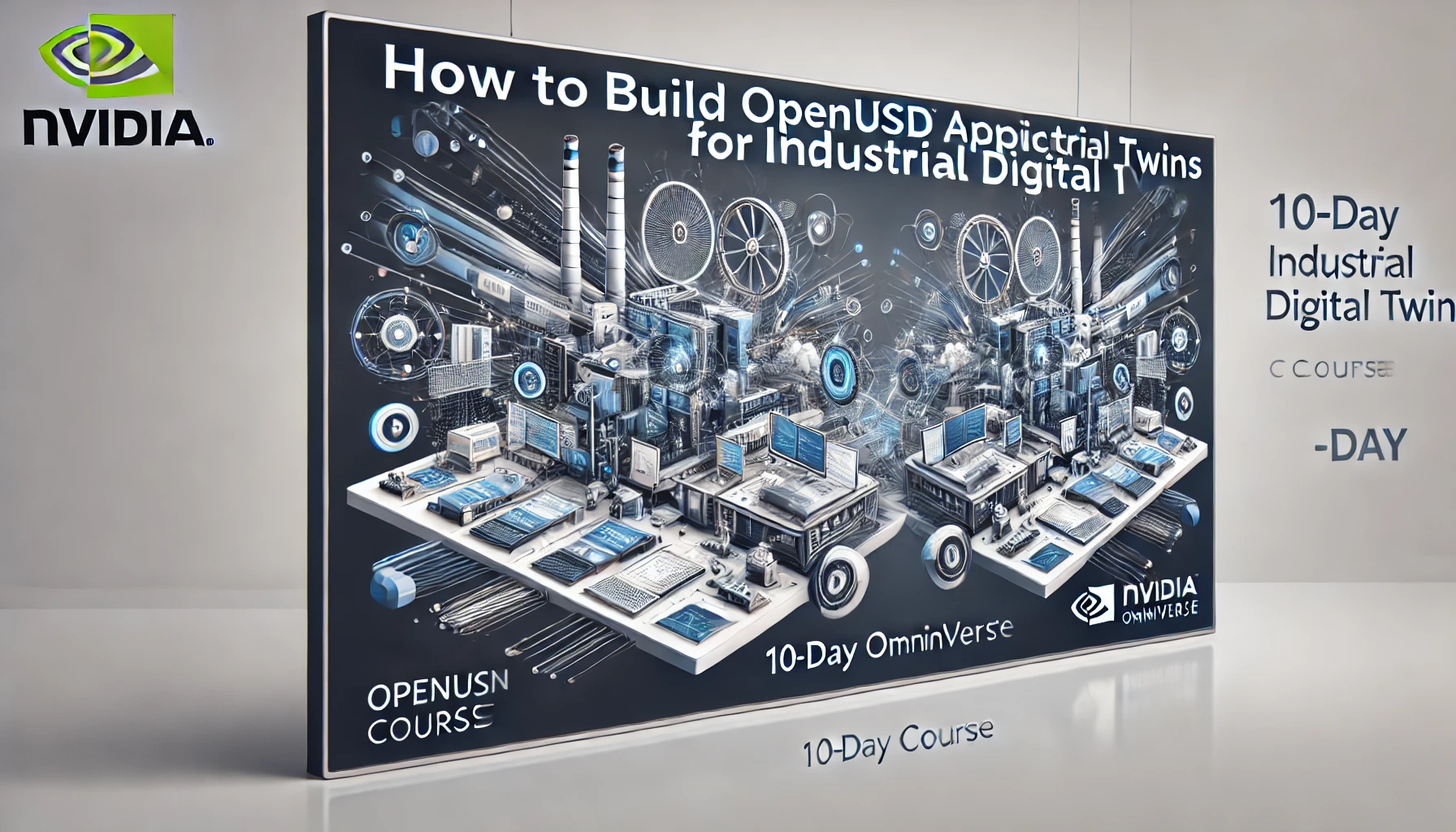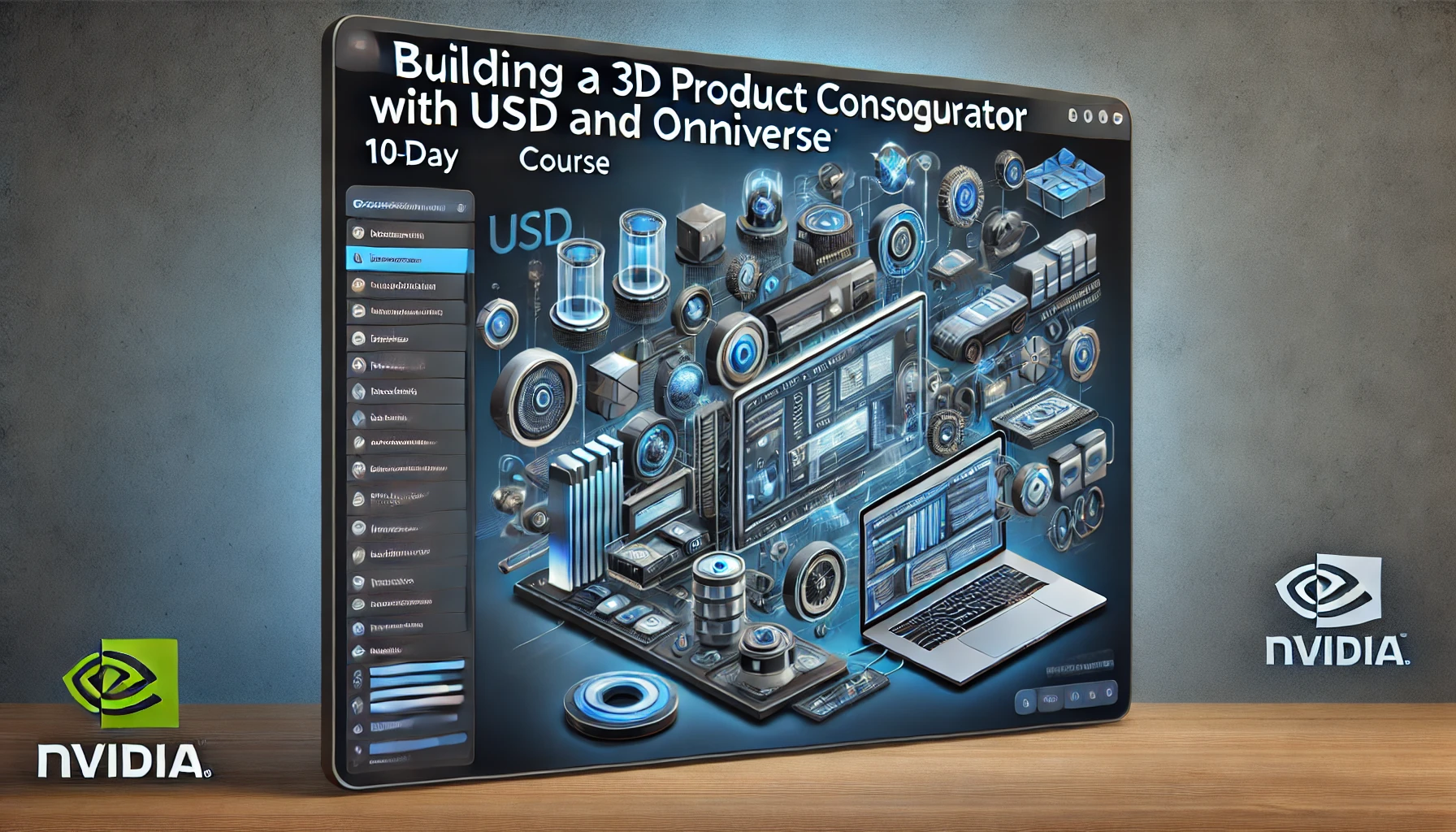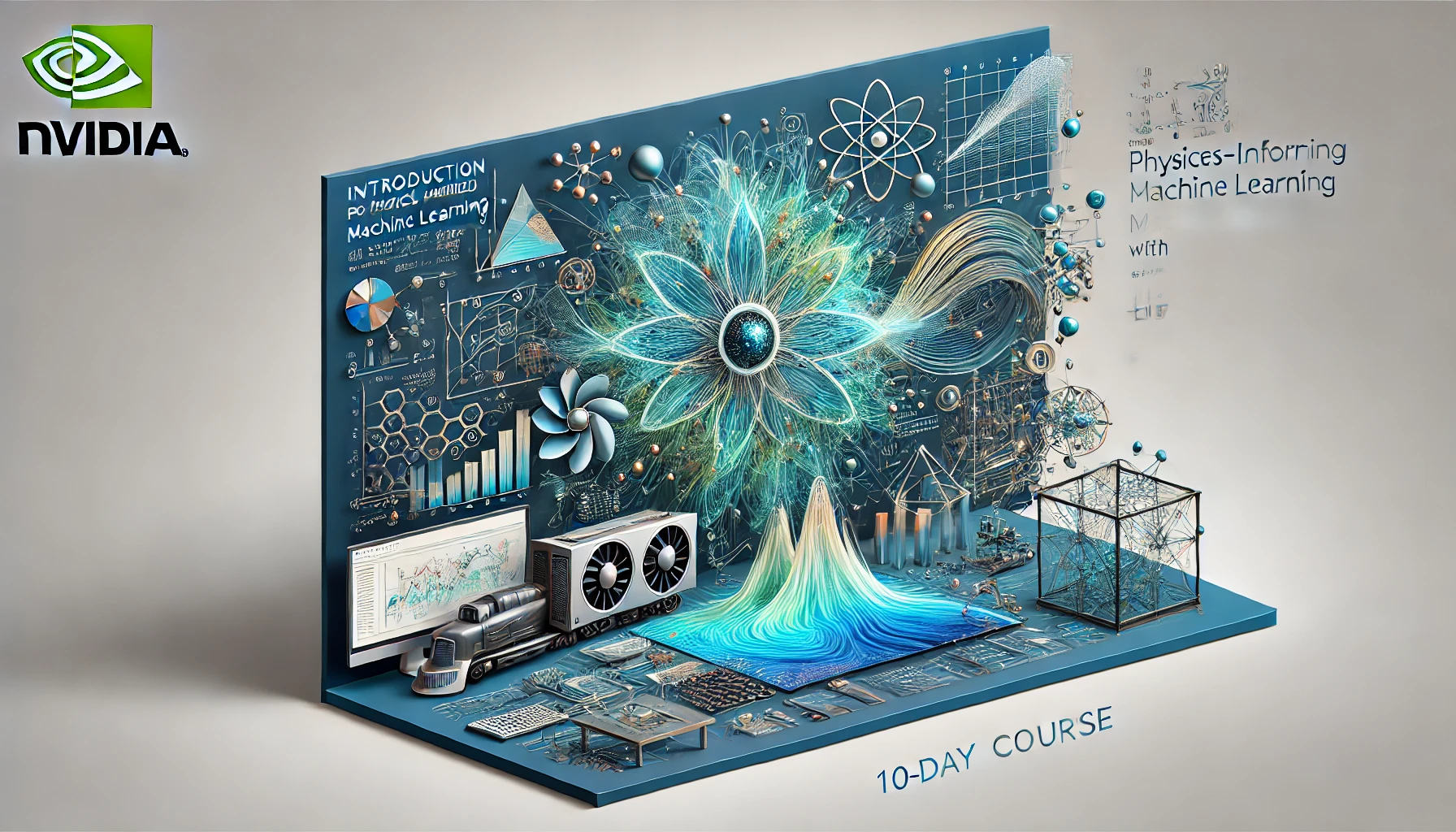Scaling Workloads Across Multiple GPUs with CUDA C++
1. About the Course
“Scaling Workloads Across Multiple GPUs with CUDA C++” is a comprehensive 10-day course designed to empower developers and engineers with the skills needed to optimize and scale applications across multiple GPUs using CUDA C++. As high-performance computing (HPC) becomes increasingly important in fields like data science, machine learning, and scientific simulations, the ability to effectively manage and optimize workloads across multiple GPUs is essential.
This course delves into advanced CUDA programming techniques, focusing on Multi-GPU CUDA programming, Concurrent CUDA Streams, Copy/Compute Overlap, and performance profiling using NVIDIA Nsight Systems. By the end of the course, participants will have a deep understanding of how to efficiently distribute workloads across multiple GPUs, optimize data transfer and computation overlap, and utilize advanced profiling tools to maximize application performance.
2. Learning Objectives
By the end of this course, participants will be able to:
- Understand the fundamentals of Multi-GPU programming: Gain a solid understanding of the concepts and challenges involved in programming for multiple GPUs.
- Utilize CUDA C++ for Multi-GPU development: Write efficient CUDA C++ code that leverages multiple GPUs to accelerate applications.
- Implement Concurrent CUDA Streams: Learn how to manage and optimize concurrent execution of multiple CUDA streams to enhance performance.
- Optimize data transfer with Copy/Compute Overlap: Apply techniques to overlap data transfer and computation, reducing bottlenecks and improving efficiency.
- Profile and optimize performance using Nsight Systems: Use NVIDIA Nsight Systems to profile, debug, and optimize CUDA applications running on multiple GPUs.
- Develop scalable, high-performance applications: Design and implement scalable applications that can efficiently utilize multiple GPUs in parallel.
3. Course Prerequisites
This course is designed for developers and engineers with experience in CUDA programming. The prerequisites include:
- CUDA C++ Programming: A strong understanding of CUDA C++ programming, including familiarity with basic concepts such as kernels, memory management, and parallel execution.
- Experience with Parallel Computing: Understanding of parallel computing concepts, threading, and synchronization.
- Linux/Command Line Proficiency: Experience with Linux operating systems and command-line tools, as most GPU programming is performed in a Linux environment.
- Basic Knowledge of Profiling Tools: Familiarity with profiling tools like NVIDIA Nsight Systems is helpful but not required.
4. Course Outlines
This course is structured to progressively build expertise in scaling workloads across multiple GPUs using CUDA C++. The content is organized as follows:
- Introduction to Multi-GPU Programming: Overview of Multi-GPU programming, its challenges, and benefits in high-performance computing.
- Setting Up the Multi-GPU Development Environment: Installation and configuration of necessary software tools, including CUDA Toolkit and NVIDIA Nsight Systems.
- Understanding CUDA Streams and Concurrency: Introduction to CUDA streams and their role in concurrent execution.
- Writing Multi-GPU CUDA C++ Programs: Hands-on experience writing and running CUDA C++ programs that utilize multiple GPUs.
- Implementing Concurrent CUDA Streams: Techniques for managing and optimizing concurrent CUDA streams for better performance.
- Optimizing Data Transfer with Copy/Compute Overlap: Applying techniques to overlap data transfer and computation, reducing bottlenecks.
- Introduction to NVIDIA Nsight Systems: Learning how to use Nsight Systems to profile and analyze Multi-GPU applications.
- Profiling and Debugging Multi-GPU Applications: Hands-on experience profiling and debugging Multi-GPU applications using Nsight Systems.
- Advanced Optimization Techniques for Multi-GPU Programming: Exploring advanced techniques for optimizing Multi-GPU applications.
- Capstone Project: A hands-on project that involves developing and optimizing a Multi-GPU application using CUDA C++ and Nsight Systems.
5. Day-by-Day Breakdown
Day 1: Introduction to Multi-GPU Programming
- Objectives: Understand the basics of Multi-GPU programming and its relevance in high-performance computing.
- Topics:
- Overview of Multi-GPU programming
- Challenges and benefits of scaling workloads across multiple GPUs
- Introduction to CUDA Multi-GPU APIs
- Activities:
- Reading materials on Multi-GPU programming and its applications in HPC
- External link: NVIDIA Multi-GPU Programming Guide
- Internal link: Regent Studies CUDA Programming Courses
Day 2: Setting Up the Multi-GPU Development Environment
- Objectives: Set up and configure the development environment for Multi-GPU programming, including the installation of CUDA Toolkit and Nsight Systems.
- Topics:
- Installing CUDA Toolkit on Linux
- Setting up NVIDIA Nsight Systems for profiling
- Configuring the environment for Multi-GPU programming
- Activities:
- Step-by-step installation and configuration guide
- Verifying the environment setup with sample Multi-GPU code execution
Day 3: Understanding CUDA Streams and Concurrency
- Objectives: Learn the basics of CUDA streams and how to use them for concurrent execution.
- Topics:
- Introduction to CUDA streams
- Managing concurrency with multiple streams
- Synchronization and dependencies in CUDA streams
- Activities:
- Hands-on exercises to explore CUDA streams and concurrency
Day 4: Writing Multi-GPU CUDA C++ Programs
- Objectives: Write, compile, and run CUDA C++ programs that leverage multiple GPUs for parallel processing.
- Topics:
- Writing CUDA code for Multi-GPU execution
- Managing GPU resources and memory across multiple GPUs
- Handling inter-GPU communication and data transfers
- Activities:
- Write and test a simple Multi-GPU CUDA program, analyze its performance
Day 5: Implementing Concurrent CUDA Streams
- Objectives: Learn techniques to implement and optimize concurrent CUDA streams for better performance.
- Topics:
- Overlapping data transfers and kernel execution with CUDA streams
- Managing multiple streams for different tasks
- Best practices for optimizing concurrent streams
- Activities:
- Implement and benchmark concurrent CUDA streams in a Multi-GPU application
Day 6: Optimizing Data Transfer with Copy/Compute Overlap
- Objectives: Apply techniques to optimize data transfer and computation overlap in Multi-GPU applications.
- Topics:
- Understanding the importance of Copy/Compute Overlap
- Techniques for overlapping data transfer with computation
- Profiling and optimizing Copy/Compute Overlap in CUDA applications
- Activities:
- Implement Copy/Compute Overlap in a Multi-GPU application and analyze performance gains
Day 7: Introduction to NVIDIA Nsight Systems
- Objectives: Learn how to use NVIDIA Nsight Systems to profile Multi-GPU applications and identify performance bottlenecks.
- Topics:
- Overview of NVIDIA Nsight Systems
- Setting up and using Nsight Systems for Multi-GPU profiling
- Analyzing application performance with Nsight Systems
- Activities:
- Profile a sample Multi-GPU application using Nsight Systems
Day 8: Profiling and Debugging Multi-GPU Applications
- Objectives: Gain hands-on experience in profiling and debugging Multi-GPU applications using Nsight Systems.
- Topics:
- Identifying and resolving performance bottlenecks in Multi-GPU applications
- Debugging common issues in Multi-GPU programming
- Using Nsight Systems to optimize performance across multiple GPUs
- Activities:
- Profile and debug a Multi-GPU application using Nsight Systems
Day 9: Advanced Optimization Techniques for Multi-GPU Programming
- Objectives: Explore advanced techniques for optimizing Multi-GPU applications for maximum performance.
- Topics:
- Advanced strategies for Multi-GPU memory management
- Performance tuning with Nsight Systems and CUDA tools
- Optimizing inter-GPU communication and data transfers
- Activities:
- Apply advanced optimization techniques to a Multi-GPU application and analyze the results
Day 10: Capstone Project
- Objectives: Apply all the knowledge gained throughout the course to develop and optimize a Multi-GPU application using CUDA C++ and Nsight Systems.
- Topics:
- Project planning and design
- Coding, profiling, and optimizing the application
- Presenting the project and discussing the results
- Activities:
- Work on a real-world Multi-GPU project, profile and optimize it using Nsight Systems
6. Learning Outcomes
By the end of “Scaling Workloads Across Multiple GPUs with CUDA C++,” participants will be able to:
- Develop Multi-GPU applications using CUDA C++: Confidently write and optimize CUDA C++ code that leverages multiple GPUs for high-performance computing.
- Implement and optimize Concurrent CUDA Streams: Apply techniques to manage and optimize concurrent CUDA streams, improving the efficiency of parallel execution.
- Optimize data transfer with Copy/Compute Overlap: Implement strategies to overlap data transfer and computation, reducing bottlenecks and improving performance.
- Use NVIDIA Nsight Systems for profiling: Effectively profile and optimize Multi-GPU applications using NVIDIA Nsight Systems, identifying and resolving performance bottlenecks.
- Explore advanced Multi-GPU optimization techniques: Utilize advanced strategies to optimize memory management, data transfers, and inter-GPU communication in Multi-GPU applications.
- Complete a real-world Multi-GPU project: Demonstrate the ability to develop, profile, and optimize a complete Multi-GPU application through a capstone project.
Participants will complete the course with a deep understanding of Multi-GPU programming, practical experience in optimizing CUDA C++ applications, and the ability to leverage advanced tools like Nsight Systems for high-performance computing. This course is essential for developers and engineers aiming to scale their applications across multiple GPUs efficiently.
This course outline is designed to provide an engaging, informative, and structured learning experience, ensuring that participants gain the skills and knowledge necessary to excel in Multi-GPU programming with CUDA C++. Whether you’re looking to enhance your current projects or expand your expertise in high-performance computing, this course offers the tools and insights needed to succeed.




